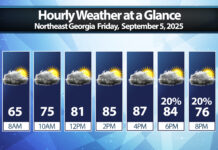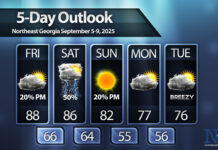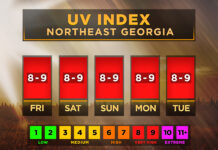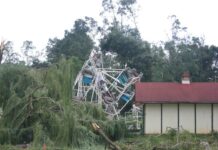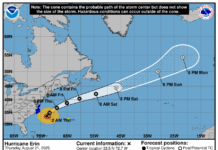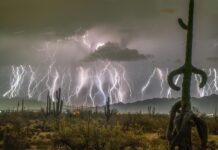
It’s that time of year again! Time for the annual Perseid Meteor shower! Unfortunately, it looks like we’re going to see plentiful clouds across North Georgia. The consolation prize, I suppose, is that even without the clouds the moon would play a major spoiler this year, so if there is a year to have clouds this is definitely it.
The Perseid meteor shower is a consistent meteor producer and the best show of the summer. It’s caused by a stream of dust left by comet 109P-Swift/Tuttle. 109P is a particularly large comet with a diameter of 16 miles, so it leaves quite a stream of dust in its wake when it visits the inner solar system every 133 years.
In a normal, moonless year you can expect to see 60-80 meteors per hour in dark skies. In addition, the Perseids are well known for their fireballs. This year the moon will rise around 10PM, and it is just past full so it will be very bright and drown out most of these. With a full moon, you can expect to see anywhere from 10-20 meteors per hour, a few of which could be fairly bright.
When and where to see them
The shower will peak Monday morning, with some spilling over into Tuesday morning, August 12 and 13, when the constellation Perseus is high in the sky, but meteors are possible all night. Monday after midnight will see the peak rates with the best chance of outshining the moon.
You can see the meteors in any direction, with the most visible in the eastern sky where Perseus will be rising.
The meteors will appear to “radiate” from the constellation, meaning if you trace their paths back, they will converge there.

While we will have clouds and a moon to contend with, if you get a chance to catch some clear skies it is always worth a look to see a Perseid!

